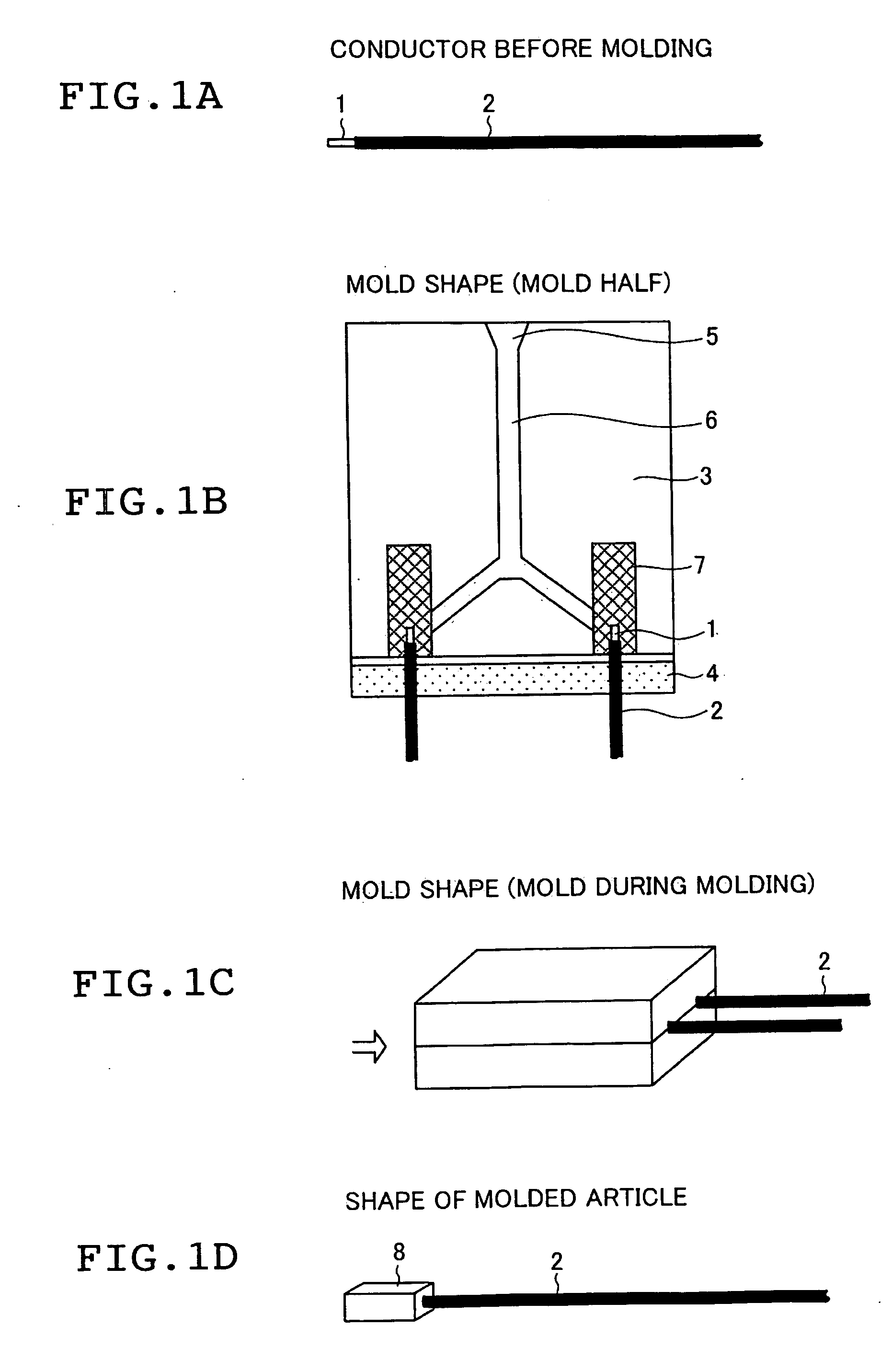Molding resin composition
a technology of molding resin and composition, which is applied in the direction of transportation and packaging, special tyres, coatings, etc., can solve the problems of inability to use polyolefin hot-melt resin as the sealing material for the crimped portions, inability to ensure adhesion to metals and pvc, and lack of sufficient adhesion to polyolefins, etc., to achieve excellent adhesion and excellent gasoline resistance.
- Summary
- Abstract
- Description
- Claims
- Application Information
AI Technical Summary
Benefits of technology
Problems solved by technology
Method used
Image
Examples
examples
[0091]The following examples more fully illustrate but do not limit the invention.
(Polyesters A to D)
[0092]The polyesters need only include the target acid and glycol components. Elitel UE3320 produced by Unitika, Ltd. was used as Polyester A, Hytrel 4057 produced by DuPont-Toray Co., Ltd. was used as Polyester B, Elitel UE3410 produced by Unitika was used as Polyester C, and Elitel produced by Unitika was used as Polyester D. The molar ratios of the acid components and the glycol components in Polyesters A to D are shown in Table 1 below.
TABLE 1PolyesterPolyesterPolyesterPolyesterABCDTerephthalic1.0 1.01.01.0acidIsophthalic acid0.16 0.46 0.250.1NPG1.0———EG0.9———1,4-BG—1.0 0.70.7PTMG—0.34——Sebacic acid——0.6—ε-Caprolactone———0.1(Numbers in table indicate molar ratios.)
examples 1 to 10
, and Comparative Examples 1 to 5
[0093]The various ingredients in Table 2 below were blended in the proportions indicated in Table 2 (parts by weight) with a kneader to prepare the molding resin compositions shown in Table 2.
[0094]The measurements described below were carried out on each of the molding resin compositions obtained.
[0095]The results are given in Table 2.
[0096]The viscosity was measured in accordance with JIS K7117-1. Using a B-type viscometer (manufactured by Tokyo Keiki Co., Ltd.), the molding resin composition obtained was melted at 190° C. for 30 minutes, and the viscosity of the molten composition was measured at a rotational speed of 10 rpm using a No. 3 rotor.
[0097]The molding resin composition immediately after production and the molding resin composition that had been aged by holding it for 72 hours after production at 200° C. were each cooled and hardened, following which the mixed state of the ingredients was visually examined. The compositions were rated as...
PUM
| Property | Measurement | Unit |
|---|---|---|
| Temperature | aaaaa | aaaaa |
| Temperature | aaaaa | aaaaa |
| Fraction | aaaaa | aaaaa |
Abstract
Description
Claims
Application Information
 Login to View More
Login to View More - R&D
- Intellectual Property
- Life Sciences
- Materials
- Tech Scout
- Unparalleled Data Quality
- Higher Quality Content
- 60% Fewer Hallucinations
Browse by: Latest US Patents, China's latest patents, Technical Efficacy Thesaurus, Application Domain, Technology Topic, Popular Technical Reports.
© 2025 PatSnap. All rights reserved.Legal|Privacy policy|Modern Slavery Act Transparency Statement|Sitemap|About US| Contact US: help@patsnap.com



